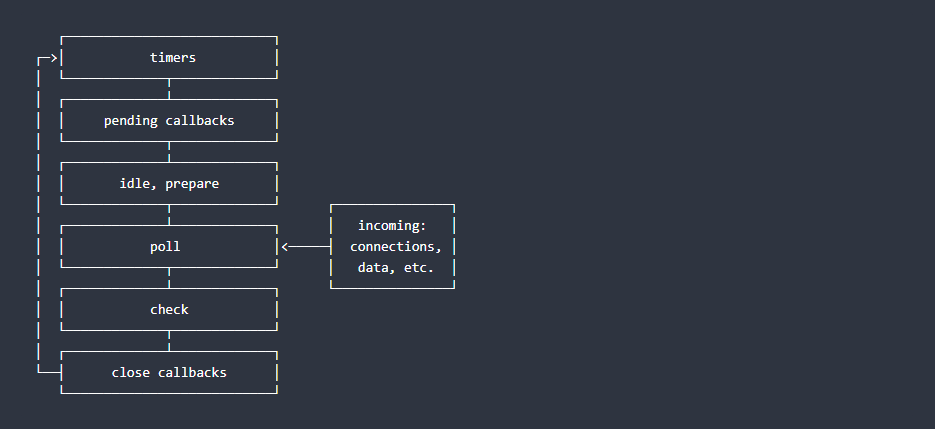
- Company
- Services
- UI/UX Design Services
- Microsoft Dynamics 365
- Mobile App Development
- AI Software Development
- Web App Development
- Generative AI Development
- Digital Product Development
- Enterprise Mobility
- SaaS Application Development
- Application Integration
- White-label WP Maintenance
- ERP Software Solutions
- Software Testing
- Offshore Development Center
- Let’s Connect
- Trending
- Technology
- Industry
- Build Your Team
- Our Work
- Company
- Services
- UI/UX Design Services
- Microsoft Dynamics 365
- Mobile App Development
- AI Software Development
- Web App Development
- Generative AI Development
- Digital Product Development
- Enterprise Mobility
- SaaS Application Development
- Application Integration
- White-label WP Maintenance
- ERP Software Solutions
- Software Testing
- Offshore Development Center
- Let’s Connect
- Trending
- Technology
- Industry
- Build Your Team
- Our Work
We use cookies and similar technologies that are necessary to operate the website. Additional cookies are used to perform analysis of website usage. please read our Privacy Policy
Node.js Event Loop: A Complete Guide

Node.js has revolutionized the way we build web applications. Its single-threaded nature, coupled with its event loop model, has made it possible to develop incredibly scalable and efficient applications. But understanding the event loop can be a bit tricky, especially for beginners.
The Node.js event loop is a fundamental concept that drives the asynchronous nature of the platform. It’s essentially a single-threaded process that manages and processes events efficiently, allowing Node.js to handle multiple requests simultaneously without blocking the main thread. This guide dives deep into the workings of the event loop, its various phases, and how it impacts code execution.
What is the Node.js Event Loop?
The event loop is a fundamental concept in Node.js. It’s the single thread that drives the application and is responsible for handling all incoming and outgoing events. Unlike traditional multi-threaded models, the event loop uses a non-blocking approach, allowing it to handle a high volume of concurrent requests efficiently.
Here’s how the event loop works in a nutshell:
- The event loop continuously monitors a set of queues for events. These queues hold tasks and callbacks that are waiting to be executed.
- When an event occurs, such as a network request or a user interaction, it is added to the appropriate queue.
- The event loop then enters a loop where it processes events one at a time. It takes the next event from the queue, executes it, and then waits for the next event.
- This process continues indefinitely until the application exits.
How Event Loop Works in Node.js?
The event loop works through a series of well-defined phases in Node.js. Each phase handles specific types of events and tasks:
- Timers: This phase executes any setTimeout, setInterval, and setImmediate callbacks that have become due.
- Pending I/O: This phase processes completed I/O operations, such as network requests and file reads/writes.
- Poll: This phase actively checks for new I/O events and adds them to the queue.
- Check: This phase checks for any I/O events that completed during the poll phase and adds their callbacks to the queue.
- Close events: This phase handles close events for sockets and other resources.
- Idle, Prepare, and Exit: These phases are related to internal bookkeeping and cleaning up resources.
Benefits of the Node.js Event Loop
The Node.js event loop is a fundamental component of the platform, responsible for managing and processing events efficiently. This unique design offers several benefits that contribute to Node.js’s success:
1. Scalability:
The single-threaded nature of the event loop allows Node.js to handle a large number of concurrent requests without blocking the main thread. This is achieved by queuing up I/O tasks and callbacks and processing them in a non-blocking fashion. This enables Node.js to scale efficiently to handle high traffic loads, making it ideal for real-time applications.
2. Efficiency:
By using a single thread for both execution and I/O operations, Node.js minimizes context switching overhead, which can be significant in multi-threaded environments. This translates to faster processing times and improved resource utilization.
3. Asynchronous Programming Model:
The event loop promotes asynchronous programming, where code execution doesn’t stall while waiting for I/O operations to complete. This allows developers to write cleaner and more responsive code, especially when dealing with multiple concurrent requests.
4. Simplicity and Maintainability:
The event loop provides a simple and predictable model for event processing, making it easier for developers to understand and debug code. This simplicity also contributes to code maintainability, especially as applications become more complex.
5. Easy Integration with APIs and Frameworks:
Node.js’s event-driven architecture allows seamless integration with various APIs and Node.js frameworks that also utilize asynchronous communication. This simplifies development tasks and promotes code reuse.
6. Reduced Memory Consumption:
By using a single thread, Node.js minimizes the need for multiple stacks and context data, leading to reduced memory consumption compared to traditional multi-threaded applications. This is particularly beneficial for resource-constrained environments.
7. Familiar JavaScript Syntax:
Leveraging the familiar JavaScript syntax for event handling and asynchronous operations allows developers to quickly adapt to the Node.js programming model, minimizing the learning curve.
8. Extensive Community and Open-source Ecosystem:
The large and active Node.js community provides a wealth of resources, including libraries, modules, and tools. This extensive ecosystem empowers developers to build robust and feature-rich applications.
9. Fast Development and Iteration Cycles:
The event loop’s asynchronous nature enables a rapid development cycle. Developers can quickly implement and test code changes without needing to restart the server, leading to faster iteration and improved productivity.
10. Microservices Architecture:
The event loop’s non-blocking approach makes Node.js well-suited for microservices architectures. Applications can be broken down into independent services that communicate asynchronously, facilitating scalability and resilience.
Common Problems and Solutions in the Node.js Event Loop
While the Node.js event loop offers remarkable advantages, it’s not without its challenges. Understanding and addressing these common problems can help developers write more efficient and predictable code.
1. Callback Hell:
Nested callbacks, often referred to as “callback hell”, can lead to difficult-to-read and maintain code. This makes it challenging to debug and understand the flow of execution.
Solution:
Promises: Utilize Promises to chain asynchronous operations, improving code readability and maintainability.
Async/await: This syntactic sugar provides a cleaner way to write asynchronous code, making it easier to reason about the flow of execution.
2. Blocking the Event Loop:
Performing long-running tasks within the event loop can block other tasks from being processed, leading to performance bottlenecks and unresponsiveness.
Solution:
Offload long-running tasks: Utilize worker threads or separate processes for computationally expensive tasks to avoid blocking the main thread.
Micro-tasks: Break large tasks into smaller, more manageable units that can be efficiently scheduled and processed.
3. Event Loop Starvation:
When an event queue becomes overloaded with high-priority events, low-priority events can be starved, impacting their execution and responsiveness.
Solution:
Prioritize critical events: Identify and prioritize critical events to ensure they are processed first and maintain responsiveness.
Monitor event loop performance: Utilize tools like node-inspector to identify bottlenecks and optimize event queue handling.
4. Unhandled Exceptions:
Unhandled exceptions can crash the entire application, leading to downtime and data loss.
Solution:
Implement proper error handling: Use try-catch blocks and error logging mechanisms to handle exceptions gracefully and prevent crashes.
Monitor application logs: Regularly review application logs to identify potential issues and errors.
5. Memory Leaks:
Holding onto unnecessary references to objects can lead to memory leaks, impacting performance and stability.
Solution:
Practice proper memory management: Use setImmediate or process.nextTick sparingly to avoid holding references for longer than necessary.
Utilize garbage collection tools: Leverage tools like heapdump or strongloop-process-inspector to identify leaks and track down offending objects.
6. Debugging Challenges:
Debugging asynchronous code can be challenging due to the non-linear nature of execution.
Solution:
Utilize debugger tools: Leverage tools like node-inspector and Chrome DevTools to set breakpoints, inspect variables, and understand the execution flow of asynchronous code.
Write descriptive code: Add comments and clear variable names to improve code readability and facilitate debugging efforts.
By understanding these common problems and implementing the corresponding solutions, developers can write more efficient and robust Node.js applications that leverage the full potential of the event loop while avoiding potential pitfalls. You can hire Node.js developer to further enhance this process, providing valuable expertise and accelerating development efforts.
Conclusion
The Node.js event loop stands as a cornerstone of the platform’s success, enabling efficient handling of asynchronous operations and facilitating the development of high-performance web applications. Its unique combination of scalability, efficiency, and asynchronous nature makes it a powerful tool for developers.
By understanding the event loop’s intricacies and addressing common challenges like callback hell, blocking, and memory leaks, developers can write more efficient and robust applications. This includes utilizing Promises and async/await for cleaner code, offloading long-running tasks, and implementing proper error handling.
For complex projects, partnering with a reputable Node.js development company can be immensely beneficial. These companies possess the expertise to navigate the intricacies of the event loop, optimize performance, and ensure application stability. Their in-depth knowledge and experience can help developers build robust and scalable applications that leverage the full potential of Node.js.
Through careful consideration and utilization of best practices, developers can unlock the power of the Node.js event loop. By understanding its nuances, addressing potential pitfalls, and leveraging expert support when needed, they can build high-performance and responsive applications that meet the demands of modern web development.
Read Also:
We are here
Our team is always eager to know what you are looking for. Drop them a Hi!
Pranjal Mehta
Pranjal Mehta is the Managing Director of Zealous System, a leading software solutions provider. Having 10+ years of experience and clientele across the globe, he is always curious to stay ahead in the market by inculcating latest technologies and trends in Zealous.
Table of Contents
×


Comments